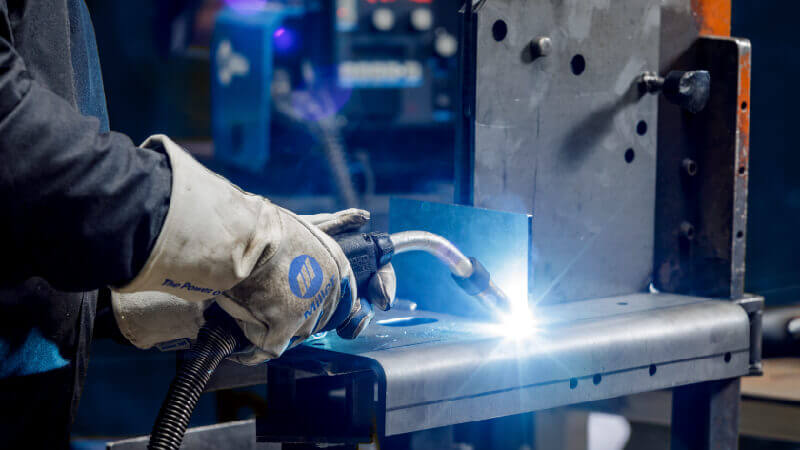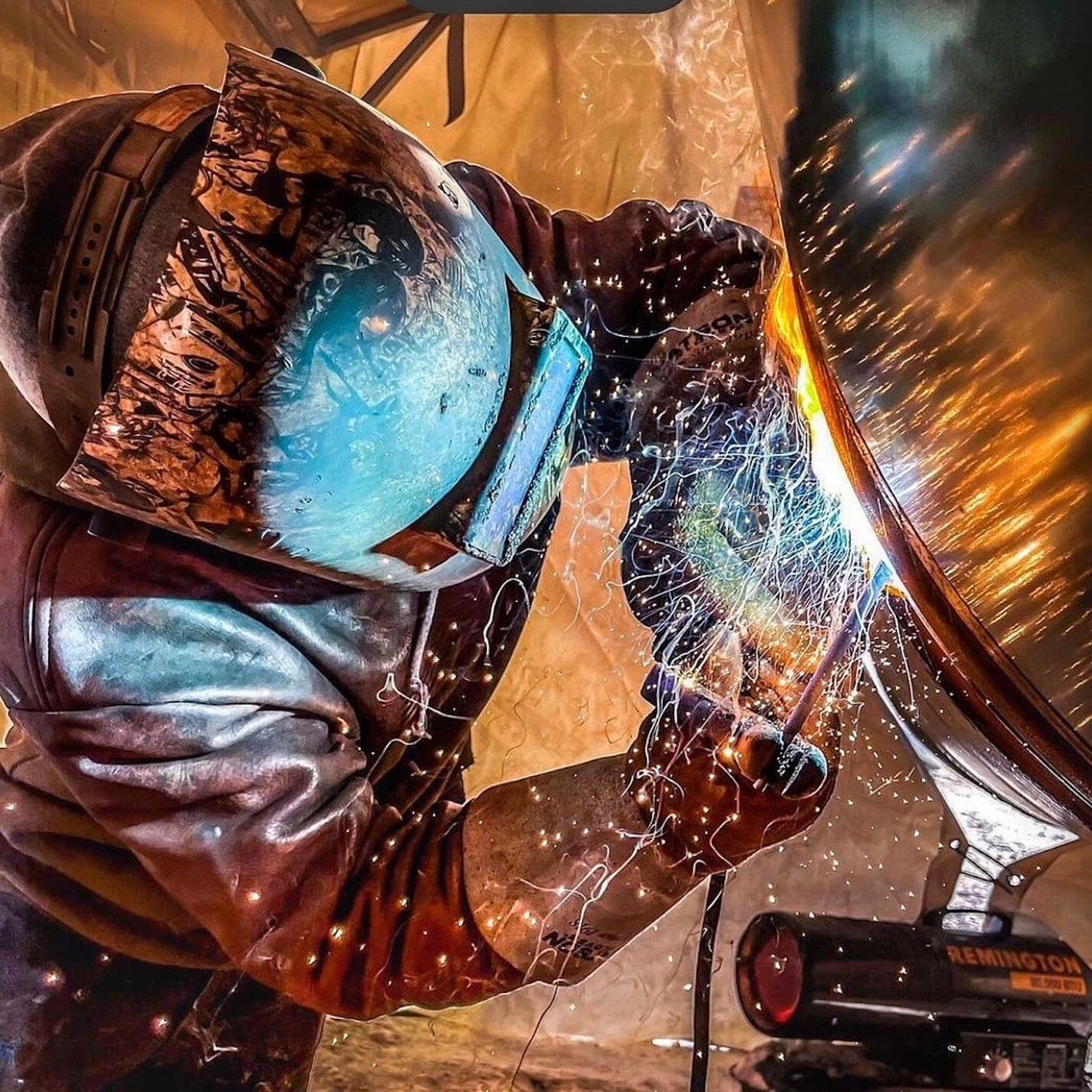Typical Welding Repair Issues and Exactly How to Address Them Properly
Welding repair work typically encounter a variety of issues that can threaten the integrity of the end product. Usual issues consist of poor infiltration, porosity, and imbalance, to name a few. Each defect presents distinct obstacles that require specific methods for resolution. Comprehending these problems is vital for welders aiming to improve their outcomes and skills. This discussion will certainly explore these usual welding repair concerns and efficient techniques to resolve them.
Inadequate Infiltration
Poor infiltration takes place when the weld steel fails to totally fuse with the base material, leading to weak joints and prospective structural failures. This concern often originates from not enough warm input, wrong electrode angle, or inappropriate welding speed. Welders might come across insufficient infiltration as a result of a miscalculation of the needed criteria for a specific material density or kind. Furthermore, contamination on the base product's surface area can hinder effective bonding, intensifying the issue. To address poor infiltration, welders need to ensure ideal settings on their equipment and keep a clean work surface. Normal evaluation of welds is suggested to identify any kind of deficiencies early, enabling timely corrections and the avoidance of compromised structural honesty in welded assemblies.
Porosity
Porosity is an usual problem in welded joints that materializes as small gas bubbles trapped within the weld steel. This issue can jeopardize the integrity of the weld, bring about minimized stamina and possible failing under anxiety. Montana Mobile Welding and Repair Welding. Porosity typically occurs from contamination, moisture, or improper welding strategies, which allow gases to leave into the liquified weld pool. To attend to porosity, welders must assure proper surface preparation, keep a clean workplace, and make use of ideal welding criteria. Additionally, picking the right filler product and securing gas can alleviate gas entrapment. Routine examination and screening of welds can assist determine porosity early, assuring timely corrective activities are taken, consequently preserving the top quality and integrity of the bonded structure
Imbalance
Misalignment in welding can occur from various factors, consisting of incorrect configuration and thermal development. Recognizing the origin is important for reliable resolution. A number of improvement strategies are offered to realign components and assure structural stability.
Causes of Imbalance
Welding misalignment usually comes from a selection of underlying issues that can compromise architectural stability. One primary reason is improper fit-up of parts prior to welding, which can lead to voids and irregular surfaces. Variations in thermal expansion throughout the welding procedure can likewise lead to distortion, specifically if the materials being joined have different coefficients of growth. Furthermore, inadequate fixturing and securing might fail to hold components safely in position, resulting in activity throughout welding. Improperly kept tools, consisting of welding equipments and tools, may present incongruities in the weld bead, additional adding to misalignment. Driver mistake, stemming from insufficient training or experience, can additionally play a substantial role in producing misaligned welds.

Modification Techniques Offered
Addressing imbalance successfully requires a combination of rehabilitative methods customized to the particular problems at hand. One common method is making use of fixtures or jigs to hold components in the right setting during welding, ensuring regular placement. Furthermore, pre-heating the materials can help in reducing distortion and enhance fit-up. For significant misalignment, mechanical adjustment methods, such as using hydraulic jacks or clamps, can be used to remedy the position prior to welding. Post-weld warmth therapy may likewise be required to ease tensions created by misalignment. Lastly, careful examination and change during the arrangement phase can protect against imbalance issues from becoming substantial issues, promoting a smoother welding procedure and enhancing overall architectural honesty.
Distortion
Distortion is a typical challenge in welding that can develop from various elements, consisting of uneven heating & cooling. Comprehending the causes of distortion is crucial for carrying out effective prevention methods. Addressing this issue not just boosts architectural integrity however also boosts the total top quality of the weld.
Reasons for Distortion
When based on the extreme warm of welding, materials usually undertake adjustments that can lead to distortion. This sensation mainly develops from thermal development and contraction during the welding procedure. As the weld location heats up, the product expands; upon air conditioning, it gets, which can create interior stresses. Furthermore, unequal heating across a work surface can aggravate these anxieties, resulting in bending or bending. The sort of material likewise plays a considerable duty; steels with varying thermal conductivity and coefficients of growth might react in different ways, causing unpredictable distortions. In addition, bad joint layout and inadequate fixturing can contribute to imbalance during welding, raising the likelihood of distortion. Recognizing these reasons is vital for effective welding fixing and prevention strategies.
Prevention Techniques
Reliable prevention techniques for distortion throughout welding emphasis on managing warm input and making sure proper joint design. Maintaining a regular warmth input helps to minimize thermal development and contraction, which can bring about distortion. Using methods such as preheating the workpiece can additionally decrease the temperature slope, advertising uniform home heating. Additionally, selecting proper joint layouts, such as T-joints or lap joints, can improve security and reduce stress and anxiety concentrations. Carrying out proper fixturing to protect the work surfaces in area better aids in maintaining positioning throughout the welding process. Staggered welding series can distribute heat extra uniformly, preventing localized distortion. By applying these approaches, welders can greatly decrease the possibility of distortion and enhance the total high quality of their welds.
Cracking
Cracking is a common issue run into in welding repair work, commonly arising from different aspects such as improper air conditioning prices, material option, or insufficient joint prep work. The incident of splits can substantially endanger the stability of the weld, bring about potential failings throughout procedure. To resolve this concern, welders have to first aws d1 6 examine the origin, making sure that materials work and suitably selected for the particular application. Furthermore, managing the cooling rate during the welding procedure is necessary; fast air conditioning can generate stress and lead to breaking. Correct joint style and prep work additionally add to minimizing the risk. Applying these methods can improve weld quality and sturdiness, inevitably lowering the probability of fracturing in completed weldments.

Insufficient Blend
A significant concern in welding fixings is insufficient combination, which occurs when the weld steel does not effectively bond with the base product or previous weld passes - Welding. This defect can cause weak points in the joint, potentially compromising the stability of the welded framework. Factors adding to incomplete combination include insufficient warmth input, improper welding technique, and contamination of the surface areas being signed up with. To resolve this problem successfully, welders ought to assure correct pre-weld cleaning and surface area prep work, in addition to change their welding parameters to accomplish sufficient penetration and fusion. Normal evaluation throughout the welding procedure can also assist determine incomplete blend early, enabling prompt corrective steps to enhance the general top quality of the weld
Overheating
While welding repair services can boost structural honesty, overheating provides a considerable obstacle that can cause material degradation. Extreme warmth during welding can alter the mechanical residential properties of steels, resulting in reduced toughness, raised brittleness, and bending. This phenomenon is specifically essential in high-stress applications where architectural dependability is paramount. Determining overheating can entail visual inspections for discoloration or distortion, along with keeping track of temperature throughout the welding procedure. To minimize the risks connected with getting too hot, welders should utilize ideal methods, such as managing heat input, adjusting traveling speed, and making use of appropriate filler materials. Furthermore, carrying out pre- and post-weld heat treatments can aid restore material residential properties and enhance the overall high quality of the fixing, guaranteeing long-term efficiency and security.
Regularly Asked Inquiries
What Are the Typical Signs of a Welding Issue?

How Can I Examine My Welds for Quality?
To test welds for quality, one can use aesthetic inspections, ultrasonic screening, and radiographic techniques. Each method assures architectural honesty, identifies issues, and validates adherence to defined standards, ultimately boosting the integrity of the welded joints.
What Safety Preventative Measures Should I Take While Welding?
When welding, one should prioritize safety and security by using ideal individual safety devices, guaranteeing ceriated tungsten correct air flow, protecting flammable materials away, keeping a tidy work area, and understanding surroundings to stop injuries and accidents.
Can I Fix a Weld Without Renovating the Entire Joint?
Fixing a weld without renovating the whole joint is possible, depending upon the damage (Montana Mobile Welding and Repair Belgrade Fabrication). Techniques such as grinding, including filler material, or utilizing a welding procedure can efficiently attend to details defects while maintaining the bordering framework
What Tools Are Crucial for Effective Welding Repair Works?
Essential tools for efficient welding repairs include a welding device, cord brush, mill, safety gear, clamps, and filler materials. Each device plays an important role in ensuring high quality and safety during the fixing process. Porosity commonly emerges from contamination, moisture, or incorrect welding strategies, which allow gases to escape into the liquified weld pool. Poorly kept devices, consisting of welding equipments and tools, might click to read more present disparities in the weld grain, further contributing to misalignment. When subjected to the extreme heat of welding, materials commonly undertake changes that can lead to distortion. Splitting is a common problem come across in welding repairs, frequently resulting from numerous variables such as inappropriate cooling rates, material selection, or poor joint prep work. A substantial concern in welding fixings is incomplete blend, which occurs when the weld metal does not sufficiently bond with the base material or previous weld passes.
Comments on “Field-tested steps to avoid porosity in welds with Belgrade Welding”